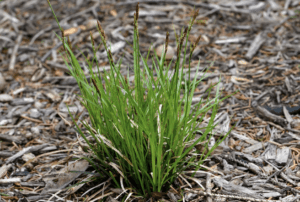Notable Natives: Sedges Have Edges
By Su Fiske | Special to the Coastal Point March 2, 2023
Sedges (carex) are my new love. I planted carex pensylvanica, carex plantaginea (seersucker sedge) and carex laxiculmis “Hobb” Bunny Blue in my garden last year. I had never heard of them before, so I am enjoying learning all about sedges. They definitely are an overlooked garden asset.

Coastal Point | stock image
Carex provides food for pollinators, native bees and birds, as well as nesting material for butterflies, birds and bees. My timing for planting and learning about carex (sedges) could not be better, as Mt. Cuba recently published their study “Carex for the Mid-Atlantic Region.”
If you read Mt. Cuba’s carex report, you will have learned that carex woodii was the top performer and did well in sun and shade. Most of my yard is shaded (due to my love of trees), and carex makes a great ground cover for partial shade and full shade areas. The more carex and groundcovers I plant, the less mulch I will need.
Carex is a great choice to use as a garden edging, as well as a replacement for turf grass, as many handled mowing quite well (and need it less frequently). Carex can be an exceptional option if you are looking to replace your lawn with a less costly, more sustainable option, and they are wonderful options for suppressing weeds. Since sedges are bunching grass (grown in tufts, rather than as sod) and have great root systems, they provide ecological importance to your gardens.
Carex can grow in wetlands, full shade, sand and sun. Just make sure to select the correct one for your situation. They are a good choice when planted collectively to be a ground cover or for erosion solution.
The carex genus has so many different varieties to choose from, so if you make sure you are selecting the right one for your sun and soil requirements, you can’t go wrong. They are very low-maintenance, great weed suppressors, and can be used singly or in groups. The carex are evergreen — the carex laxiculmis “Hobb” Bunny Blue that I planted last year stayed green throughout the winter.
Carex looks stunning planted under hydrangeas or serviceberry, and intermingled with flowering bulbs, ferns, wild strawberry, columbine, Solomon’s seal, iris and achillea. Amongst shade trees, carex mixed with Virginia bells and woodland phlox would be a showstopper. What makes this plant great for the area is that carex is deer- and rabbit-resistant, and some can grow in clay or dunes.
Just like grasses, carex can add beautiful texture to your garden. You all know I am all about the bark on trees. Well, I am just as passionate about texture in gardens. If you are going for the meadow look, you should have at least 60 percent grass, or for a perennial mixed garden, around 35 percent. Sedges mixed with grasses will give you not only the texture you need but also the height differences.
Wildlife value
Carex supports biodiversity in gardening, which we are learning is extremely important.
Several birds, including turkey, grouse and woodcock, eat the seeds, and a variety of insects (some of them specific to carex).
Carex are larval host plants for moths and skipper butterflies. Cherokee sedge is host to Appalachian eyed brown, Georgia satyr, Dion skipper and dun’s skipper butterflies. Carex pensylvanica hosts 36 types of butterflies.
Fun facts
Sedge leaves were used by Native Americans to make rope, baskets and clothing.
Carl Linnaeus established the genus carex in 1753. It is one of the largest groups of flowering plants, from 1,100 to 2,,000 and has the most dynamic chromosome development of all.
An archaeological team found swaths (burial wrappings) from more than 58,000 years ago made from sedges.
Eons ago in Turkana, humans ate a 35 percent grass and sedge diet. (I bet we were skinny then!)
During World War I, German soldiers used quaking sedge as a straw mattress.
Oddly enough, skeletal remains of Sudanese people from 2,000 years ago show they ate purple nutsedge (a noxious weed). They had surprisingly healthy teeth, which is believed to be because the nutsedge has antibacterial properties.
